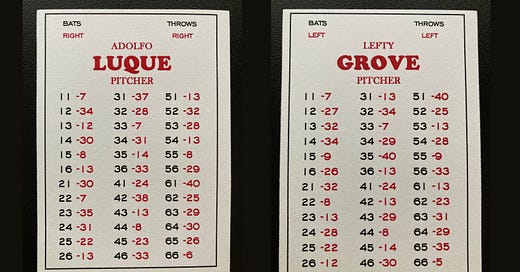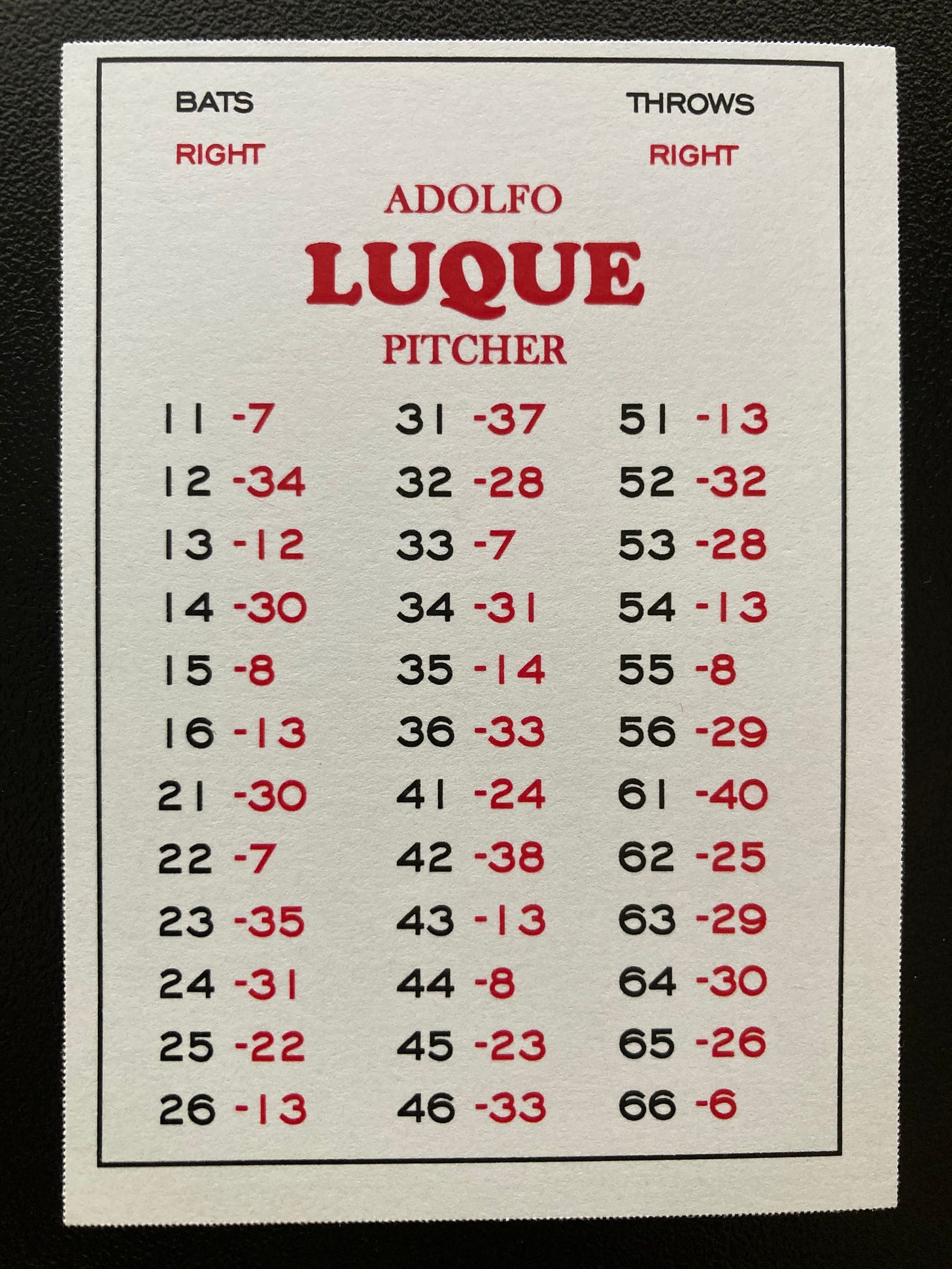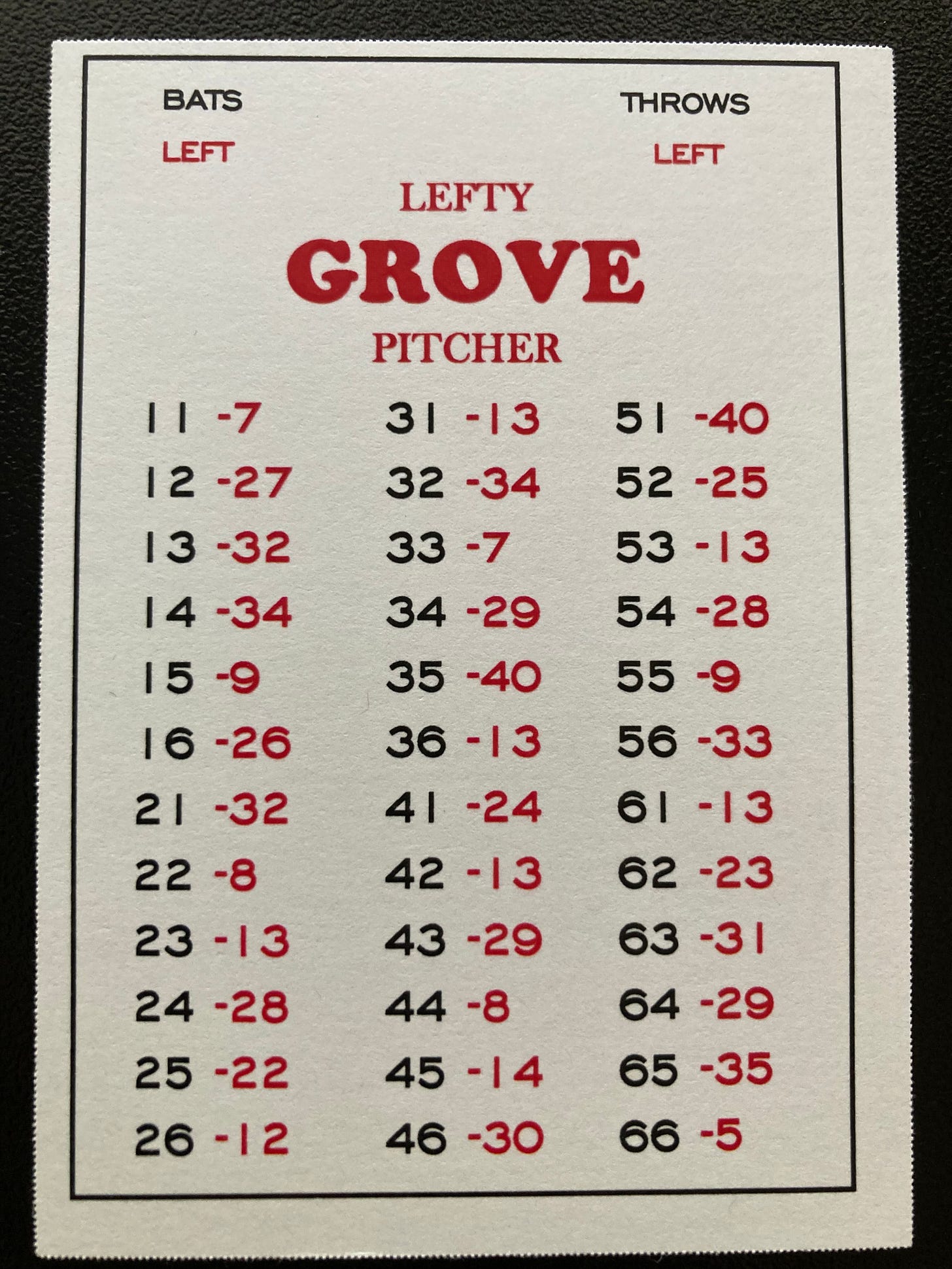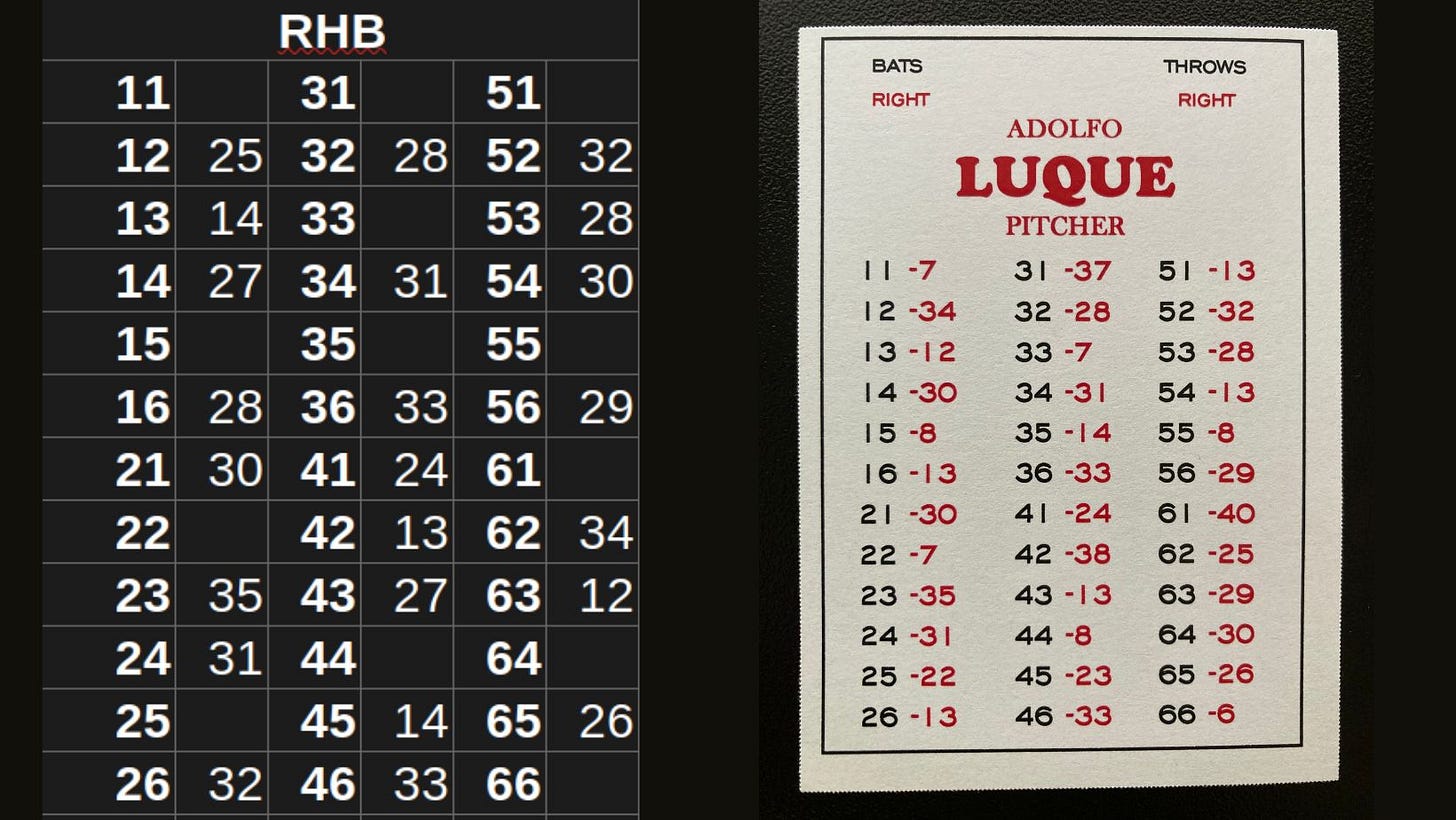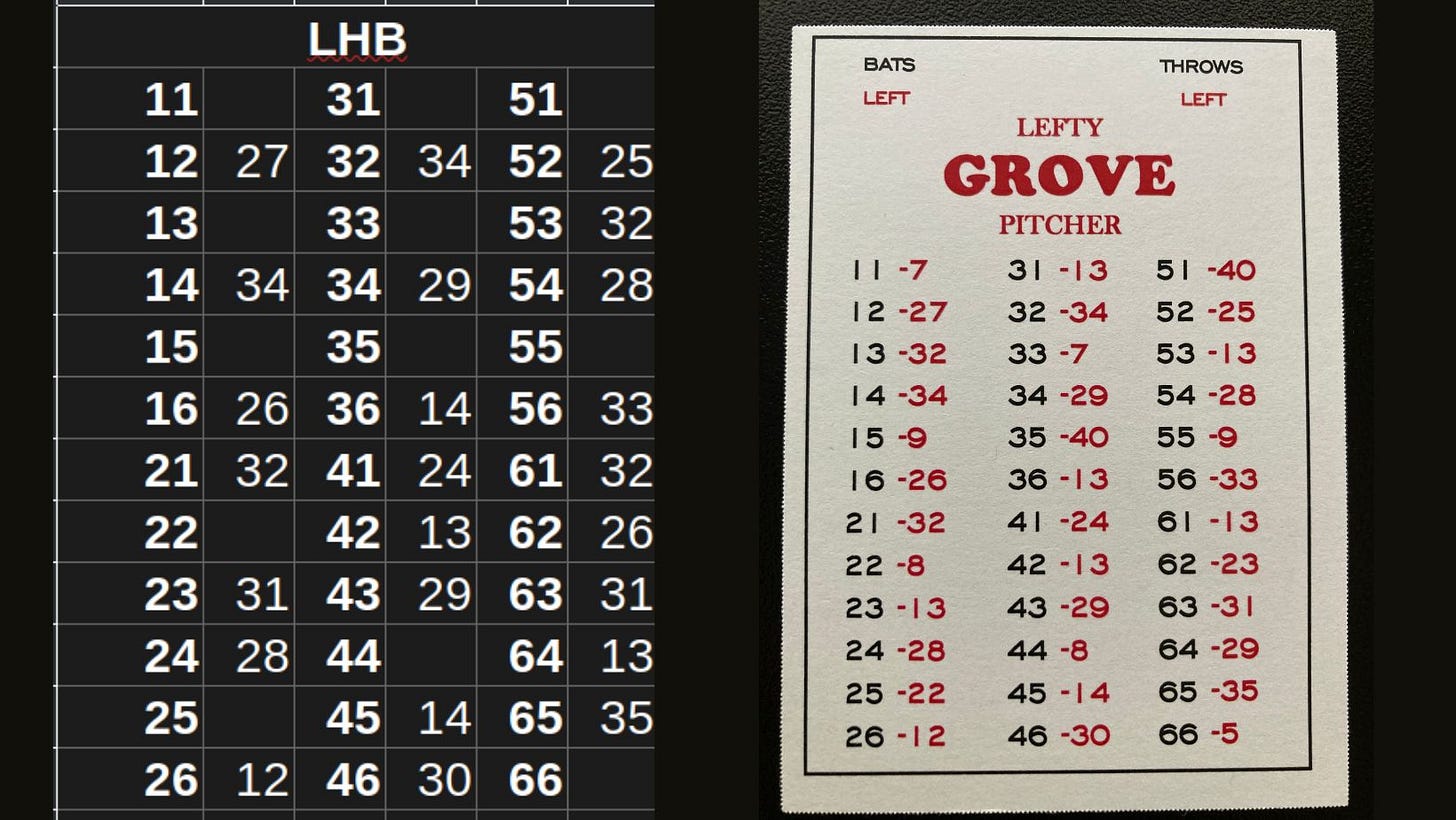More On 23
We took a pretty shallow look at play result number 23 in National Pastime last time. Let’s see if a deeper dive will help us figure out what is going on.
Odd 23 Placement
As you remember from last time, most of the 23 play results occur on what we’d consider “hit numbers:”
When you see a clear pattern like this with a few odd exceptions, it might be helpful to look at the exceptions first.
The only player to receive play result number 23 on dice roll number 45 is Adolfo Luque of the Brooklyn Dodgers:
The only player to receive a 23 on dice roll number 62 is Lefty Grove of the Philadelphia Athletics:
Now, this presents an interesting opportunity for us. Luque was a right handed hitter, while Grove was a left handed hitter. We know that Clifford Van Beek likely used sample cards based on the handedness of the hitters; see here for more details. We might be able to learn something by comparing these two players to the sample model cards we came up with earlier:
Let’s look at Luque first:
There seems to be something strange going on here, doesn’t there? The following dice roll numbers are what we’d expect them to be:
21
23
24
32
34
36
41
46
52
53
56
65
And the following numbers are off:
12
13
14
16
26
42
43
45
54
62
63
12 dice rolls follow the pattern, but 11 rolls are off.
I haven’t done a comprehensive look at these theoretical templates to see how many cards deviate from the pattern or how many results they deviate by. My gut tells me, though, that it’s pretty significant when half of your dice rolls are off the pattern. Even the famous play result number 12, which would later be used by J. Richard Seitz as a set identifying play result, has changed position for Luque.
In short, something is going on here. There’s got to be a reason why Van Beek stuck the 23 on 45 and stuck the lone play result number 14 on dice roll 35. Remember that 5 players received a 23 on 35; it’s not like it was unheard of.
Now let’s take a look at Grove:
This is a bit more normal. The following dice rolls break the pattern:
23 (note that this is a 13 instead of a 31)
36 (13 instead of a 14, which is presumably not strange for a pitcher)
53 (another 13)
61 (yet another 13)
62 (our 23)
64 (a third 29, which is interesting)
Unlike Luque, most of the deviation on Grove’s card seems to be additional strikeout numbers.
Strikeouts and Walks
As you’ll surely recall, one of the nice things about play result numbers 13 (the strikeout number) and 14 (the walk number) is that the results are consistent regardless of the on base situation.
Grove has 6 13 play result numbers, which really isn’t that far off the mark. Pitcher cards in National Pastime average 5.84 13s, ranging from 7 (shared by 32 pitchers) all the way down to 2 (George Uhle’s card). 4 of Grove’s 6 13s break the model; 4 of the 6 numbers on Grove’s card that break the model are 13s.
Luque has 5 13 play result numbers, 4 of which break with the model. There are another 7 dice rolls on Luque’s card that break the model. Again, something must be going on here, though we’re probably going to have to wait a little bit before we dive in deeply.
Again, I haven’t checked this yet, though I suspect that a significant amount of the deviation from the model cards comes on pitcher’s cards. We’ll take a look next time at the placement of “extra” 13s on pitcher’s cards. We’ll take a look at “missing” 14s as well; as you may have noticed, both Luque and Grove only have a single 14.
I’m not entirely certain that strikeout and walk play result numbers hold the key to understanding what Clifford Van Beek did. However, it’s still worth investigating and digging into.
Placement of Other 23s
As I noted above, play result number 23 ends up on these dice rolls on “normal” pitcher cards:
15
25
31
35
51
61
These are all supposed “hit” dice rolls, or numbers not assigned specific out producing play result numbers by the model. Of course, it’s not the case that all of these dice rolls automatically produce hit numbers: 61, for example, is an out on most cards. With the exception of left handed batters, though, the play result numbers assigned to these numbers don’t seem to follow a clear pattern.
Oh, and by the way: there are no left handed batting pitchers with play result number 23 on 61. Here’s the full list:
The theoretical model calls for a 32 on dice roll 61, which only shows up on 2 of these 24 cards. The rest of the play results are split between 13 (always a strikeout) and 27 (a ground ball to third that only scores a run if the bases are loaded).
Anyway, this doesn’t necessarily answer a lot of questions for us, though I do think it brings us a little bit closer to understanding precisely what Clifford Van Beek was doing. To be continued.

